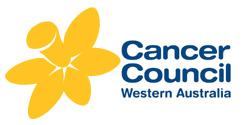How to be SunSmart
By following 5 simple sun protection steps when the UV Index is above 3, you can reduce your risk of skin cancer.
1. Slip on protective clothing
Look for:
- Clothing that covers as much skin as possible.
- Materials that have a close weave for higher UV protection.
- Darker colours which absorb more UV radiation.
- Cotton, polyester/cotton and linen materials. They are lightweight, cool to wear and when tightly woven can protect against 95 per cent of UV radiation.
- Material with high UV Protection Factor (UPF), which explains how much sun protection the material provides. Some clothing is treated to absorb UV.
- Materials that maintain their sun protective value when wet, such as lycra.
2. Slop on SPF 30+ sunscreen
Sunscreen should not be relied on as the only form of sun protection. No sunscreen provides 100 per cent UV protection – remember to use in combination with protective clothing, hats and sunglasses.
Look for a sunscreen that:
- has a sun protection factor (SPF) of at least 30+.
- is labelled broad spectrum – this will filter both UVA and UVB radiation.
- is water resistant – less likely to be washed off by water activities or sweat.
- meets Australian standards – look for AUST L or AS/NZS 2604:98 on the label.
- has a valid expiry date.
How to apply sunscreen:
- Apply sunscreen 20 minutes before going outdoors to clean, dry skin.
- Layer sunscreen onto exposed skin rather than rubbing it in.
- Apply a thick layer of sunscreen – most people do not use enough.
- Reapply every 2 hours or more often if in water, sweating or towel drying.
- Remember your lips (a common skin cancer site). A zinc or lip balm will provide longer lasting protection than a cream.
3. Slap on a hat
Slap on a hat that provides as much shade as possible to your face, head, neck, ears and eyes. There are 3 main styles of hats that provide adequate sun protection:
- Broad brimmed hats – with a brim of at least 7.5cm.
- Bucket or surfie style hats – with a deep crown and brim of at least 6cm.
- Legionnaire hats – with a flap that covers the back of the neck.
Baseball caps and visors are not recommended as they leave the ears and the back of the neck exposed.
4. Seek shade
Staying in the shade is one of the most effective ways to reduce sun exposure, but remember that other sun protection measures (clothing, hats, sunglasses and sunscreen) should also be used to avoid reflected UV radiation.
Whatever you use for shade, be it trees, built shade structures or some form of portable shade, make sure it casts a dark shadow.
5. Slide on some sunglasses
Sunglasses can protect your eyes against UV radiation.
When choosing sunglasses look for:
- Frames that fit close to the face.
- Wrap around styles that reduce UV entering from the sides.
- Sunglasses that meet Australian standards.
- Sunglasses that have an eye protection factor (EPF) of 10.
If you wear prescription glasses consider adding a UV protective coating, attaching protective shades or wearing prescription sunglasses.
See the Cancer Council Western Australia (external site) for more information how to be SunSmart.
When to use sun protection
The best way to know when you need to use sun protection is to use the UV Index. The UV Index is a simple measure of the UV radiation level at the Earth's surface. It has been designed to help people to avoid overexposure to high levels of UV radiation. The values of the Index range from 0 upward and the higher the Index value, the greater the potential for damage to the skin and eye, and the less time it takes for harm to occur.
You need to use sun protection when the UV Index is 3 or above, and when the UV Index reaches 8 or above you should take extra care and stay out of the sun if this is possible.
See the Bureau of Meteorology (external site) to view average monthly UV levels in Western Australia.
Visit My UV (external site) to find out more about the UV Index and download the Be SunSmart UV Index app.
How to use the SunSmart UV Alert
The SunSmart UV Alert is a tool that uses the UV Index to help you protect yourself from UV radiation. The SunSmart UV Alert is issued by the Bureau of Meteorology, and tells you the time of day when the UV Index is forecast to reach 3 or above in your area. So whenever the SunSmart UV Alert times apply, you need to use sun protection.
The SunSmart UV Alert can be found on the weather page of all Australian daily newspapers, on the Bureau of Meteorology (external site) for over 200 locations across Australia, and on some radio and mobile phone weather forecasts. Make sure you choose the forecast for your area.
More information
More information is available from Cancer Council Western Australia (external site).
Remember
- Slip on protective clothing
- Slop on SPF 30+ sunscreen
- Slap on a hat
- Seek shade
- Slide on some sunglasses
This information provided by

Last reviewed: 04-01-2021
Acknowledgements
Cancer Council WA
This publication is provided for education and information purposes only. It is not a substitute for professional medical care. Information about a therapy, service, product or treatment does not imply endorsement and is not intended to replace advice from your healthcare professional. Readers should note that over time currency and completeness of the information may change. All users should seek advice from a qualified healthcare professional for a diagnosis and answers to their medical questions.